Fireworks, bugles and rattles were sounded by 25,000 triumphant fans when Dundee returned home after winning the League Cup 70 years ago.
The League Cup was introduced to a football-starved Scottish public just after the end of the Second World War, a full 15 years before the English League decided it was a competition worth copying.
The Scottish version was styled on the Southern League Cup, which was played on a regional basis during the hostilities.
The Dark Blues became the first side to win back-to-back League Cups on October 25 1952 after defeating Kilmarnock 2-0 at Hampden in front of 51,000 fans.
After their League Cup success in 1951-52, George Anderson’s Dundee side sailed through their qualifying section undefeated in the 1952-53 term.
They then progressed to the semi-finals after beating Stirling Albion in a two-legged quarter-final tie, losing 3-1 at Annfield but winning 5-0 at Dens Park.
The semi-final against Hibs was played in Edinburgh at Tynecastle, but Dundee played well and won 2-1 with counters from Billy Steel and Bobby Flavell.
Dundee’s opponents in the Hampden final were Kilmarnock, from the B Division, who had shown their pedigree by beating Rangers in the last four.
Telegram team-talk by Dens boss
Dee boss Anderson wasn’t well enough to travel from his home in Aberdeen, so assistants Reuben Bennett and Reggie Smith were in charge of the team.
Anderson sent a telegram to Dens Park with a message to the players which was read out when they boarded the train from Dundee West Station on Friday afternoon.
It said: “To again reach the final you have overcome all hurdles.
“You have done this by producing football of real brilliance.
“You now face the last hurdle. I know that no matter how difficult, you will clear it and thereby create a record. Go to it boys! I’ll be listening.”
Nine special trains were run from Dundee to Glasgow for the match.
Dundee: Bobby Henderson, Gerry Follon, Gordon Frew, Ken Ziesing, Alfie Boyd, Doug Cowie, Jimmy Toner, Bert Henderson, Bobby Flavell, Billy Steel, George Christie.
Kilmarnock: John Niven, Ralph Collins, Jimmy Hood, John Russell, Bob Thyne, Jimmy Middlemass, Tommy Henaughan, Willie Harvey, Gerry Mays, Willie Jack, Matt Murray.
Killie had the upper hand in the first 45 minutes but found Dundee goalkeeper Bobby Henderson in inspired form with a string of great saves.
Henderson was only in the first team because Bill Brown was on his National Service.
The Ayrshire lot were the better side for long stretches of the game but full-time training eventually told when it looked as if extra-time might be needed.
A long pass from Jimmy Toner found top-scorer Bobby Flavell who skipped round Thyne and fired the ball low past Niven to give Dundee the lead on 82 minutes.
With three minutes to go and Killie desperately looking for the equaliser, Alfie Boyd passed back to Henderson whose clearance was caught by a gust of wind.
To add salt to the Ayrshire club’s wounds, the ball landed about 30 yards from Killie’s goal and Flavell got there first and whacked the ball into the bottom corner.
Saturday evening’s Sporting Post read: “The League Cup goes back to Dundee but they will never have to fight harder for a trophy. They have the opportunism of Bobby Flavell to thank. Those two late goals were masterpieces of quick thinking.”
Dundee streets were a riot of noise
After drinking champagne from the League Cup in the dressing room, the Dundee team headed to Buchanan Street station where Alfie Boyd showed the trophy off to the Dundee fans out of the window of the train.
The party arrived in Dundee at 8.35pm where the players climbed onto the roof of a single-decker Alexander bus that steered at snail’s pace through the central streets.
The Courier said: “Fireworks, bugles, crawmills, whistles and the cheers from 25,000 throats greeted the Dundee team on their arrival back in the city with the League Cup on Saturday night.
“The central streets were packed with the jubilant crowd, which was lined 10-deep in parts of Whitehall Crescent and Whitehall Street.
“Two hours before the train was due at West Station from Glasgow people were booking their vantage points in readiness for the team’s triumphant return with the cup for the second year in succession.
“They were well-behaved and the police had no control troubles to face.
“When the train steamed in several minutes late at 8.35pm, Lord Provost William Black, accompanied by his granddaughter; Mr George Morgan Thomson, MP for Dundee East and his wife; and civic leaders were on the platform to congratulate the players, who were then hustled out to their bus in Yeaman Shore via a side entrance.
“Alf Boyd held the cup aloft as he sat in front of his team-mates on the bus top, and the bus slowly made its way through the dense crowd via Whitehall Crescent and Whitehall Street into High Street, where trams and motor cars were brought to a standstill.”
The bus went up Reform Street and straight down West Ferry by Victoria Road where a small celebration was held at chairman James Gellatly’s house in Albany Road.
A crowd of around 1,500 surrounded the Royal British Hotel to welcome the players when they went in for their victory at 10pm and refused to budge until man of the hour Bobby Flavell made a personal appeal at one of the windows.
Coronation Cup snub by SFA beaks
At the end of the 1952-53 season, Dundee were snubbed by the SFA, who declined to invite the Dark Blues to participate in the Coronation Cup between four English and four Scottish clubs to celebrate the accession of Queen Elizabeth II.
It was supposed to be the best of British.
Back-to-back League Cup winners Dundee were controversially passed over for Celtic despite how dire the Glasgow side had been throughout the season.
Celtic finished eighth in the League, were eliminated at the group stage from the League Cup, and knocked out of the Scottish Cup by Rangers in the quarter final.
Dundee FC fan and author Kenny Ross said: “Dundee FC were extremely unhappy they were not asked to compete for the Coronation Cup in 1953.
“Four clubs from England — Arsenal, Manchester United, Newcastle United and Tottenham Hotspur — were joined by Celtic, Rangers, Aberdeen and Hibs.
“Rangers had won the League and Scottish Cups while Aberdeen and Hibs were invited as runners-up in both.
“Dundee felt aggrieved as they had won back-to-back League Cups, including that season’s trophy, and finished higher in the League than both Celtic and Aberdeen.”
Speaking in the Blether with Brown Evening Telegraph column, Kenny added: “Instead of taking the huff, though, Dundee contented themselves with a summer tour of South Africa, organised by the flamboyant manager George Anderson as part of the Dens Park club’s 60th anniversary celebrations.
“The tour also, however, assisted the SFA, which found itself unable to fulfil a commitment it had already made.
“Considering their snub received in the Coronation Cup fiasco, it was a conciliatory gesture by Anderson but he was always a master of both diplomacy and publicity.”
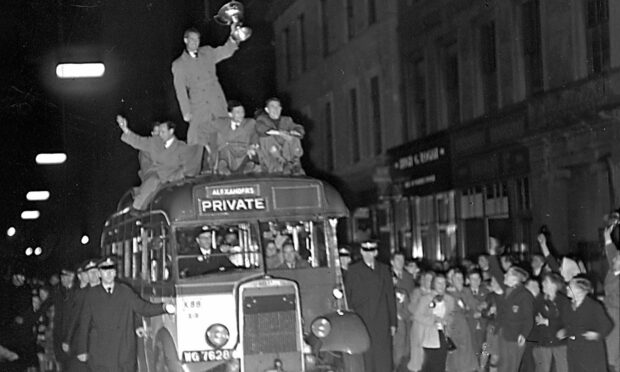
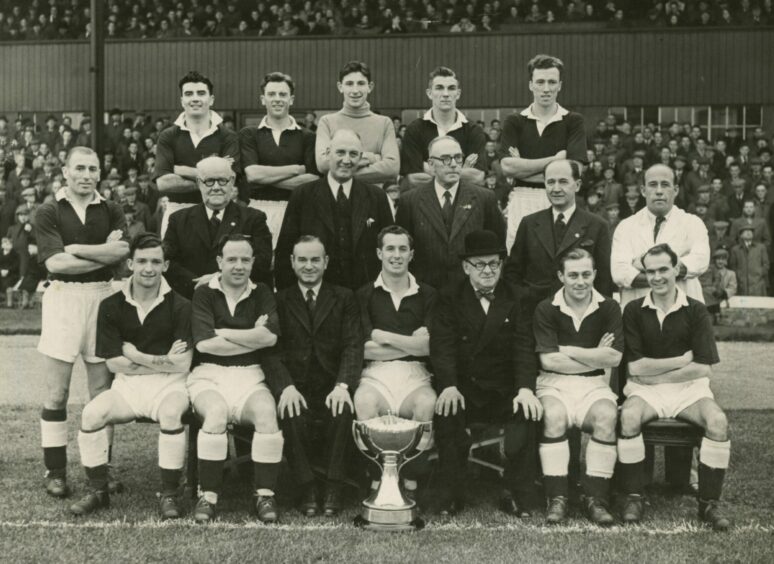
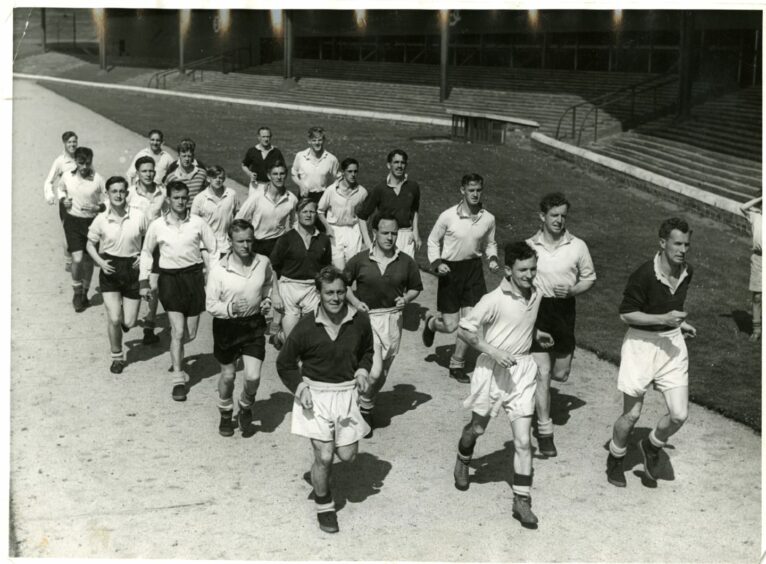
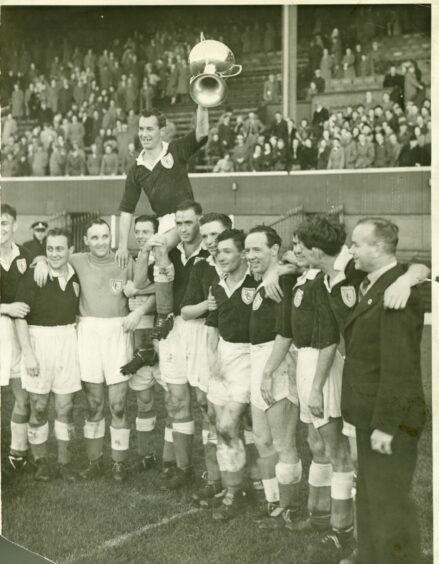
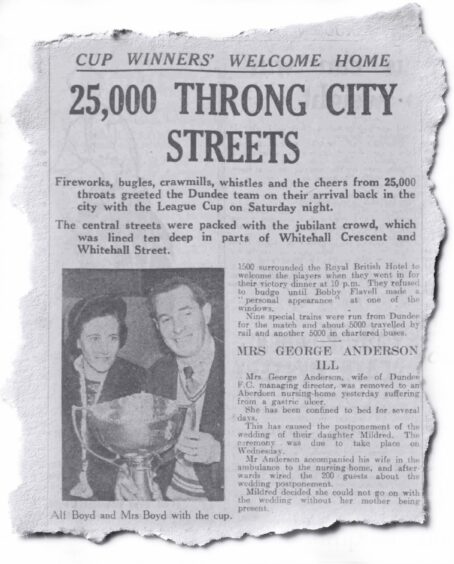
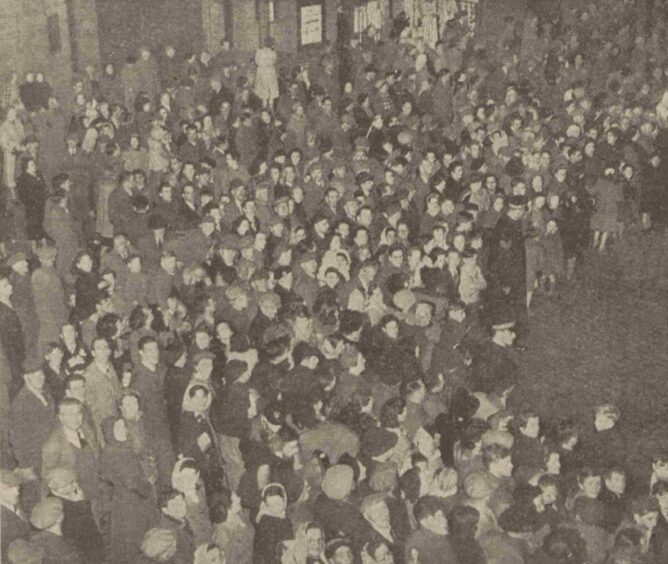

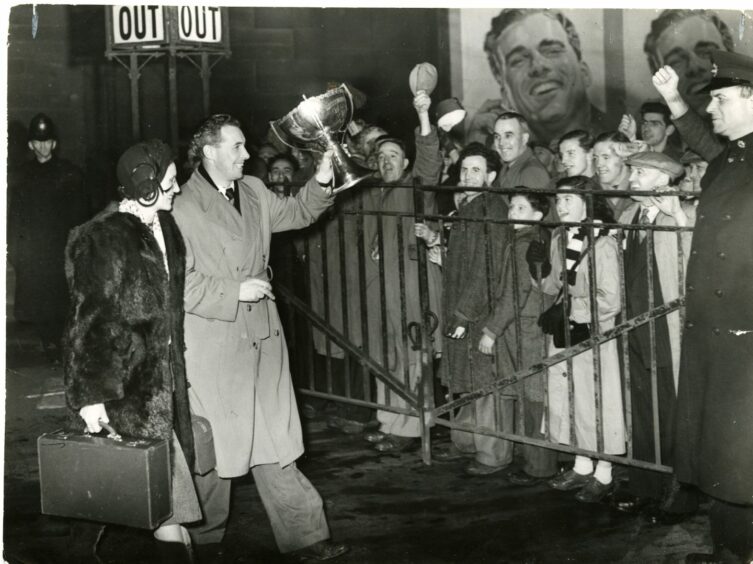
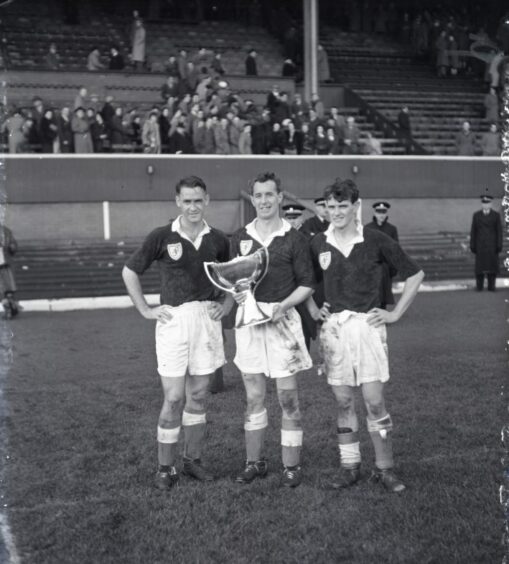










Conversation